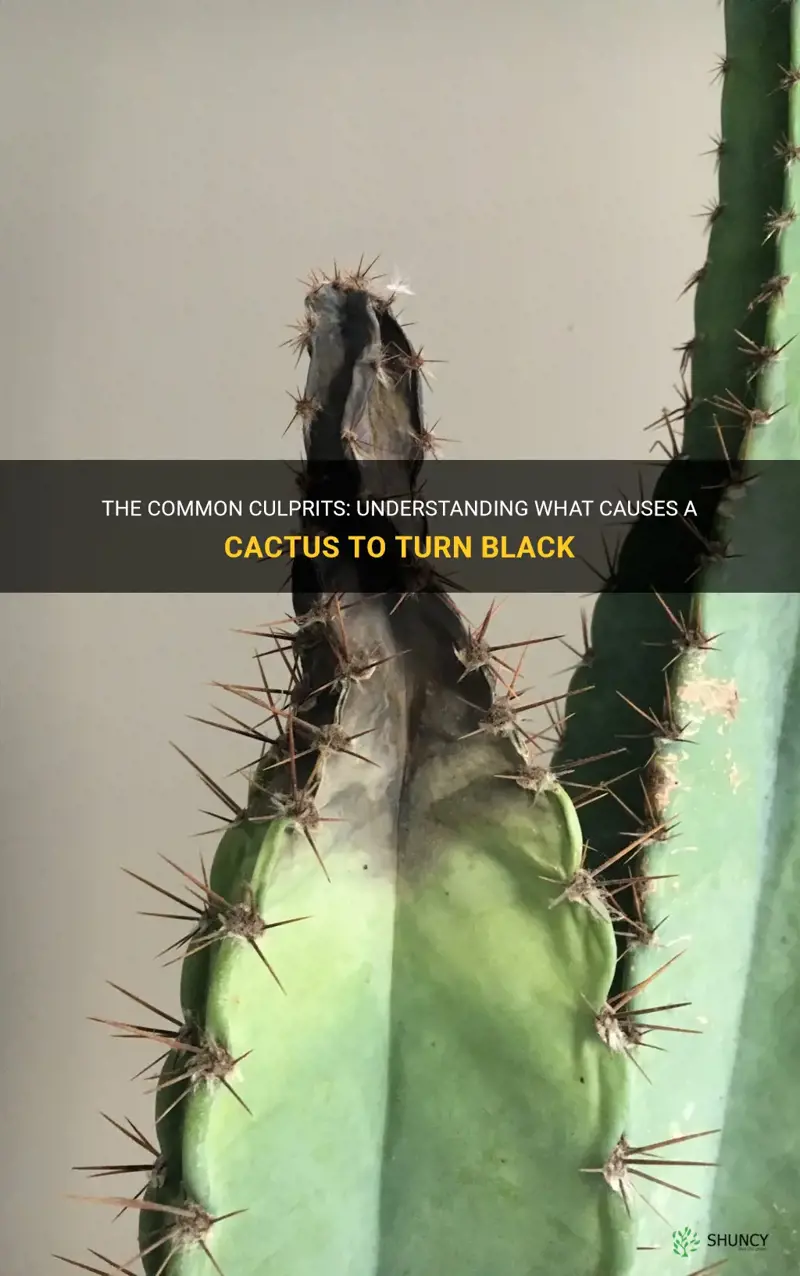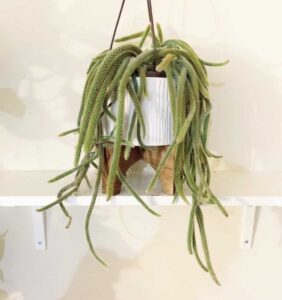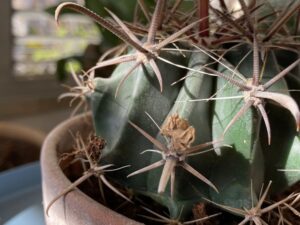My cactus is turning black? What a bewildering predicament! The vibrant, resilient plants we so admire can sometimes succumb to an unexpected change. The transformation to a darker hue can raise alarms for an avid gardener. Each time our cherished succulent shifts in color, it may indicate underlying issues that require attention. Understanding the causative factors of this transformation is essential for revitalizing your cactus and preserving its health.
In this exploration, we will delve into the potential causes behind a cactus turning black and offer actionable remedies to remedy this distressing situation.
Unraveling the Mysteries of Blackened Cacti
The appearance of black patches or an overall discoloration in cacti is commonly associated with environmental stressors or biological invaders. The intricate biology and anatomy of cacti make them resilient, yet they are not invulnerable. The onset of blackening may arise from several factors, including overwatering, fungal infections, or sunburn. Each cause has its unique attributes that can provoke this change.
Overwatering: The Silent Assassin
One of the most prevalent culprits is overwatering. Cacti are inherently designed to endure arid conditions, possessing specialized adaptations that allow them to thrive with minimal moisture. Excessive watering can lead to root rot, causing the cactus to exhibit darkened areas as the plant begins to decompose from within.
When roots suffer from saturation, the plant struggles to absorb essential nutrients, resulting in stunted growth and ultimately discolored flesh. Early signs of trouble may present as soft, mushy spots or a general darkening of the plant’s surface.
To remedy this situation, assess the watering schedule critically. Ensure the pot has sufficient drainage, utilizing a cactus-specific soil mix that promotes aeration. If heavy root rot occurs, consider repotting the cactus in fresh soil, carefully removing affected roots to stave off further degradation.
Fungal Infestations: The Unseen Enemy
Another nefarious reason your cactus may be turning black is the presence of fungal infections. These pathogens can infiltrate your plant, proliferating under conducive conditions such as humidity and stagnant water. Symptoms often manifest as dark, velvety spots on the cactus or an overall gelatinous appearance.
To combat fungal infections, it is critical to take immediate action. Fungicides can be used as a part of an Integrated Pest Management (IPM) approach. Begin by isolating the affected plant to prevent the spread of spores to other cacti. Treatment involves trimming away diseased sections and applying an antifungal solution according to the manufacturer’s instructions. Remember that vigilance in controlling humidity and avoiding overly crowded arrangements will reduce the likelihood of future infestations.
Sunburn: The Unexpected Scald
Interestingly, cacti can also experience sunburn, which might seem counterintuitive given their desert origins. However, sudden exposure to intense sunlight, particularly after a period of lower light conditions, can lead to sunscald. Dark patches may form on the cactus as a reaction to overheating and UV damage.
To alleviate sunburn, gradually acclimatize your cactus to increased sunlight. Create a shading regimen with sheer curtains, or transition it to sunnier spots incrementally. If extensive sunburn has occurred, consider providing adequate shelter with a protective cover until the plant heals.
When Ignorance is Bliss: Avoiding Future Mishaps
Understanding the factors that lead to a cactus turning black is half the battle. The second half involves preventive measures that help maintain your cactus’s health. Maintaining environmental stability is paramount—cacti thrive best in dry, well-ventilated areas with minimal disturbance. Awareness of your cactus’s specific needs, including light and water requirements, allows for a more successful cultivation experience.
Regularly monitoring for signs of distress or imbalance is imperative. Familiarizing oneself with the growth patterns and colorations inherent to the species aids in recognizing changes sooner rather than later. Adequate sanitation practices, such as cleaning gardening tools and pots, also contribute to preventing fungal outbreaks and other maladies.
Conclusion: Embrace the Challenge
As disquieting as it may be to witness your cactus turning black, embracing the challenge can lead to deeper knowledge and appreciation of these remarkable plants. By identifying environmental stresses, controlling watering practices, and implementing preventive care, you can return your cactus to its former glory. Engage with your plant actively, nurturing and observing it as it continues to flourish.
So, when your cactus changes color, remember: it’s not just a plant—it’s a vibrant testament to the delicate balance between nature’s wonders and the challenges they face. Approach this journey with curiosity and diligence, and your cactus will surely thrive once more.




Leave a Comment